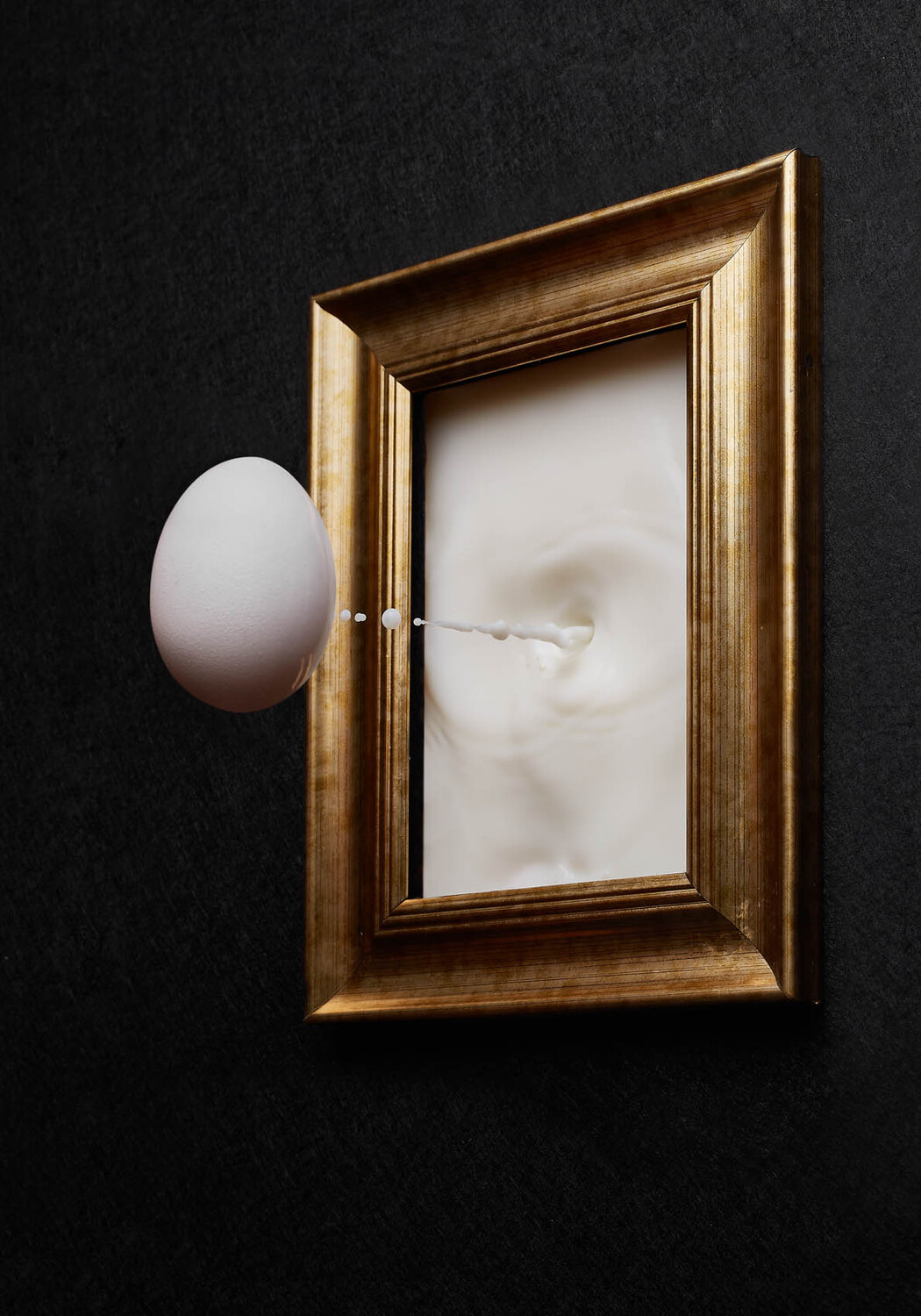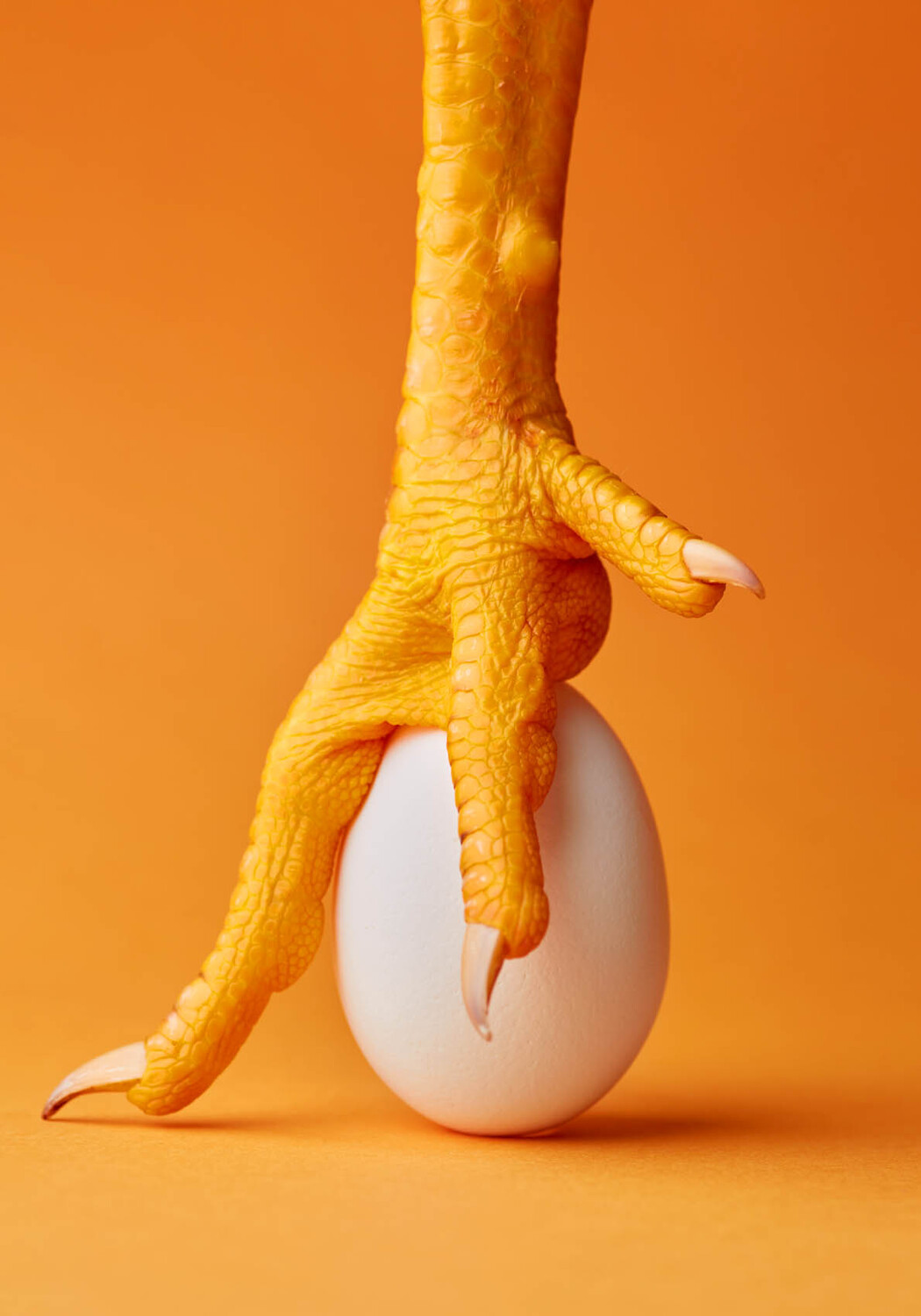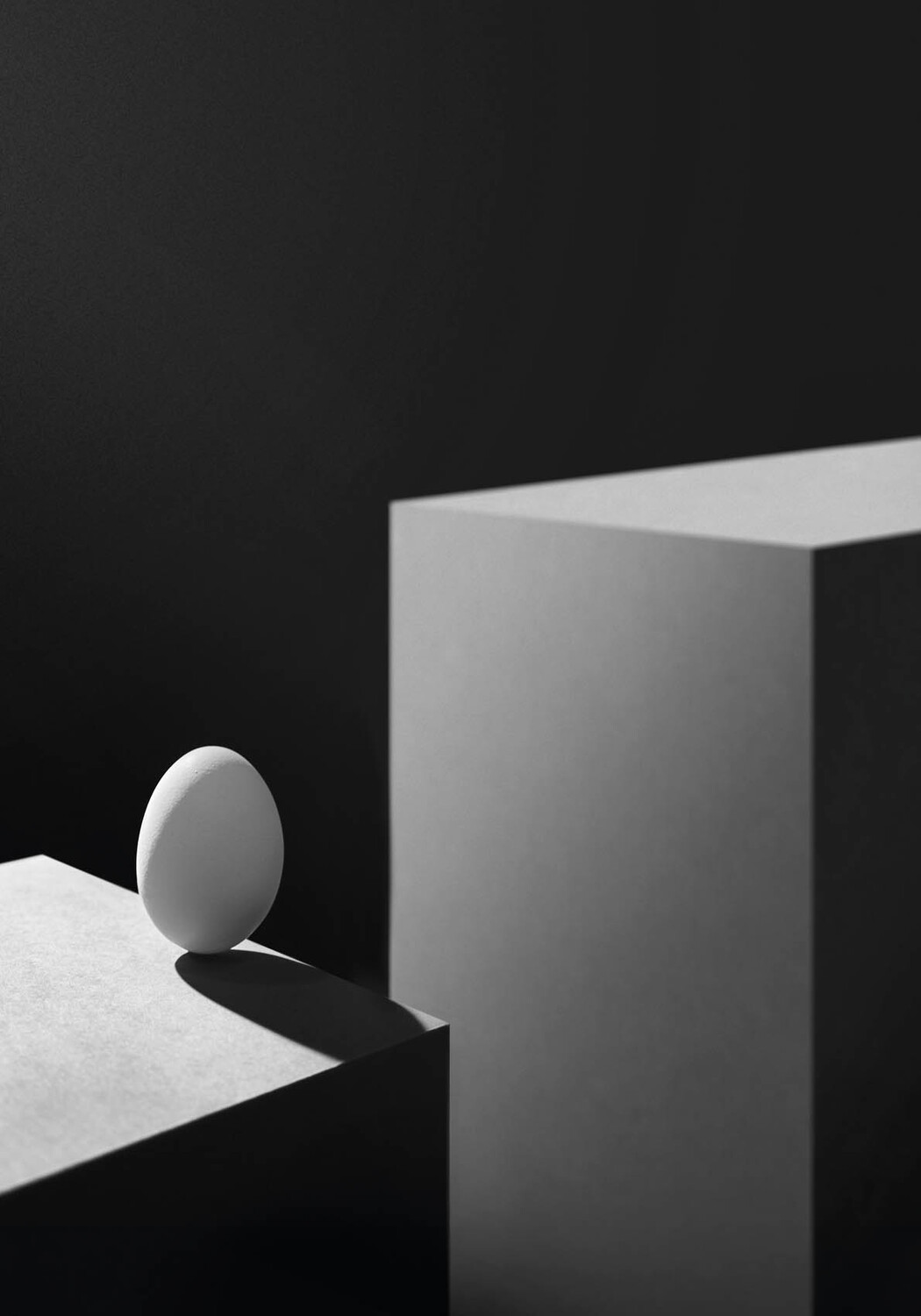Daniel Pastor Valero
Year of birth: 1980.
Where do you live: Elche (Spain).
Your education: Technical Engineer in Computer Management with additional online training in art and photography.
Describe your art in three words: Contemplative, symbolic, emotional.
Your discipline: My discipline is conceptual photography, which is inspired by a deep observation of the human condition.
Website | Instagram
Your work explores the intersection of technology, design, and photography. How do you integrate these different mediums into a cohesive artistic vision?
My approach always begins with a question. Sometimes that question arises from my relationship with and understanding of technology, which often leads me to explore emotional issues around how we interact with it. Design — through minimalist composition, the geometry of the egg, and negative space — helps me build a clear visual narrative. It becomes the framework that supports the emotional core of the image.
In that way, I bring together technology, design, and photography through an intuitive and emotional process.
Your project, “El Camino del Huevo,” uses the egg as a powerful symbol. Can you elaborate on the significance of this symbol and how it relates to the themes of life and time?
The egg is a fundamental symbol in my artwork — within its intriguing geometry it holds the promise of life, the fragility of existence, and the mystery of transformation into something new. In El Camino del Huevo, I use this symbol to explore two key themes:
Human fragility: The eggshell is both strong and delicate. It reflects how our thoughts can protect us from life’s experiences, yet that same shell can sometimes crack.
Time and transformation: An egg is not a static object — something is always unfolding inside it. It speaks to the passage of time and the process of change. Each photograph captures a moment suspended in that timeline.
When looking at these images, viewers may find themselves reflected in different phases of their own lives, depending on their personal experiences.
 Daniel Pastor Valero | Sal del marco
Daniel Pastor Valero | Sal del marco
You describe your creative process as intuitive and emotional. Can you walk us through how a particular piece comes to life, from the initial idea to the final photograph?
My creative process usually begins with an emotion or a question about the human condition. Sometimes it’s sparked by personal experiences, other times by observing those around me. I capture that initial feeling through both verbal and visual sketches — combining notes in my notebook with a digital moodboard where I explore the shapes, light, and textures of the egg. From there, I design the composition using minimalist and geometric principles, carefully defining the frame, background, and lighting so that the ovoid shape becomes the narrative center.
In most of my photographs, I build the objects entirely by hand — they either share the scene with the egg or form the setting around it. I don’t use digital postproduction or artificial intelligence in my work.
During the act of photographing, I also embrace minimalism — always using the same type of lens and the simplest lighting setup possible, often with just one or two lights.
In your artistic journey, you’ve received several awards and recognitions. How have these accolades influenced your approach to art, if at all?
Awards and recognitions are always a joy — a kind of external validation — but they haven’t changed the way I create. What they have done is strengthen my confidence in continuing to explore this artistic path. Rather than influencing the content or style of my work, these acknowledgments have encouraged me to go deeper, to take more risks conceptually, and to commit to ideas that invite contemplation and reflection. In a way, they confirm that the emotional dialogue I’m trying to establish with the viewer is actually happening — and that’s incredibly motivating.
 Daniel Pastor Valero | Es mío
Daniel Pastor Valero | Es mío
Your photography aims to evoke curiosity and self-reflection in the viewer. How do you ensure that your work invites personal interpretation rather than providing straightforward answers?
I try to make each image an open door rather than a closed statement. Even though I always start from a clear idea, the themes I explore are universal, and that allows each viewer to respond in their own unique way. I work through minimalism, removing any unnecessary narrative elements and leaving space for the viewer to complete the meaning from their own experience. I’m not looking to illustrate a specific idea, but rather to suggest an emotion or a state of being. I also avoid using titles that might steer interpretation — I prefer the images to speak through what’s visual and sensory, creating an internal dialogue within the viewer. Because to me, the most valuable quality of art lies in its ability to open up intimate spaces for reflection in those who engage with it.
You mention using minimalism to convey deep emotions. How does minimalism impact the viewer’s connection to your work?
Minimalism, in my work, is not just an aesthetic choice — it’s a tool to create emotional space. By reducing visual elements to the essentials, I leave room for the viewer to fill in the image with their own story, emotions, or memories. I believe that the less visual noise there is, the easier it becomes to hear what we carry inside. The egg, with its pure and symbolic form, fits perfectly within this approach: it suggests many things without stating any of them explicitly.
 Daniel Pastor Valero | Atrévete
Daniel Pastor Valero | Atrévete
What is your personal relationship with the egg as a symbol in your work, and how do you think it resonates with a diverse audience?
My relationship with the egg as a symbol carries both a serious side and a light-hearted one, and I believe both coexist well within the project. Sometimes, when I mention that my photographic work revolves around the egg, it’s not unusual for people to smile or even make jokes—there are so many wordplays around eggs. That initial reaction doesn’t bother me; in fact, I find it valuable. It breaks the distance and sparks curiosity to know more about the work.
But then, when those same people see the images, they often discover a different dimension—more intimate, more reflective. That’s when the symbol transforms. The egg stops being just an everyday object and becomes a powerful metaphor for who we are: vulnerable, in constant process, sometimes cracked, sometimes carrying something yet to be born. That dual reading—between the seemingly trivial and the deeply human—is part of what keeps me drawn to it. Because it connects with people in different ways, and that gives it a kind of universality.


Leave a Reply